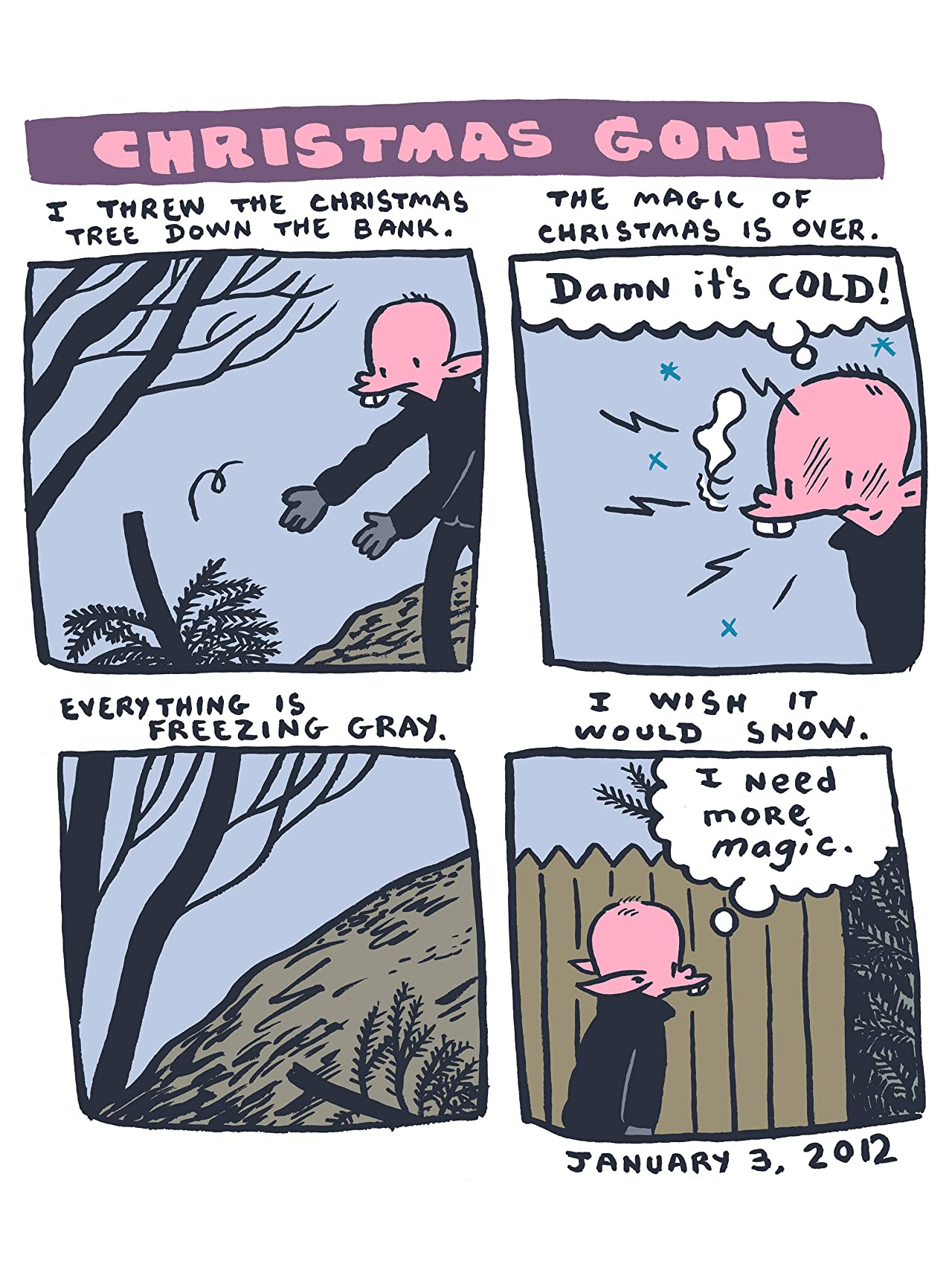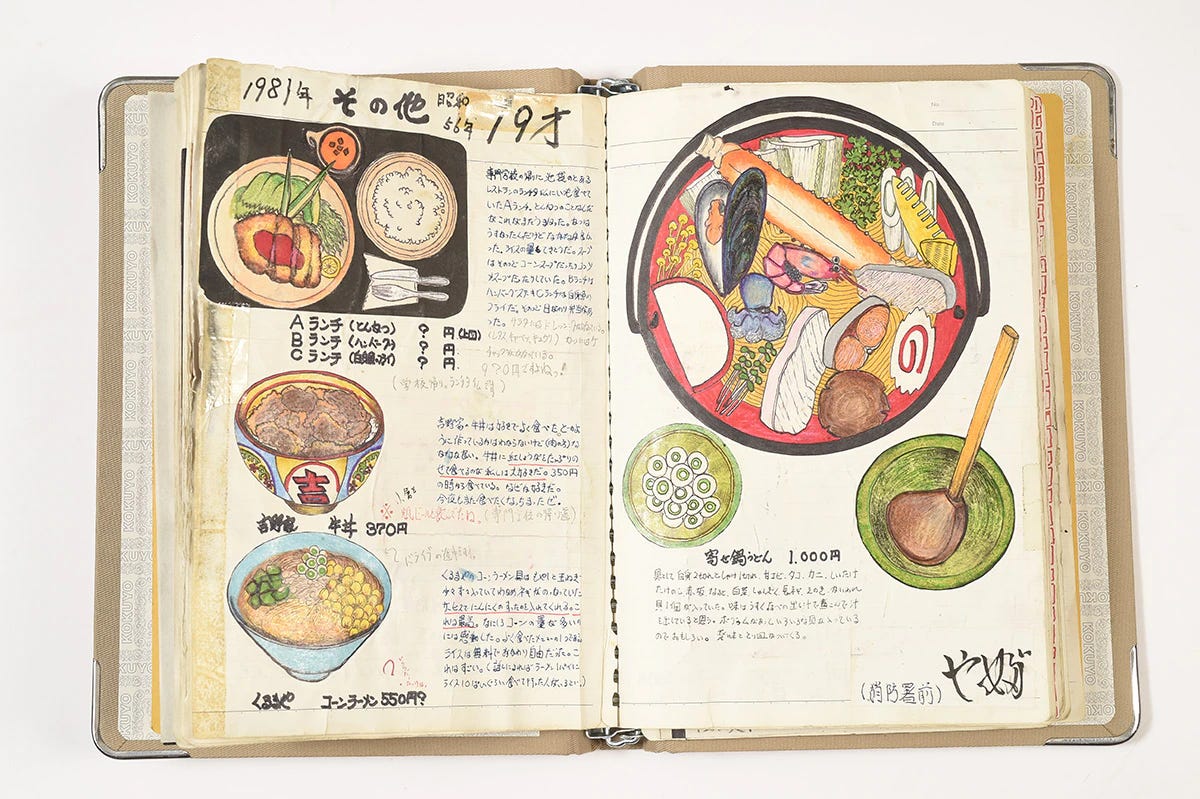Keeping a Comics Diary
From travelogues to daily records, comics diaries are a uniquely visual way to capture and document our lives. They offer an opportunity to focus on drawing as equally as writing, and require that we make time to reflect on our experiences. There’s room for play, experimentation, mundanity, and honesty since we’re often our own audience. Diary comics can be mined later for stories and opinions when we’re in creative ruts, or turned into minicomics of their own right. Rough, experimental, relatable, everyday, or adventurous, diary comics are a growing field of the comic genre. We’ll look at some examples below.
American Elf
A classic example of the “comic diary,” American Elf by James Kochalka ran from 1998 to 2012 (and documented every day therein minus one!). Originally published on Kochalka’s website, the daily comic has also been collected and published by Top Shelf. The “James” in the comic is represented by a human-elf (really, a mostly human figure with some cool elf ears) and shares his life with readers—from the minute to the overwhelming. Always engaging, often profound, American Elf is a superlative example of a comic diary.
In You & a Bike & a Road, Eleanor Davis chronicles her cross-country bicycle journey. She notes the day of her trip, the date, and where she is during the trip, and from there her observations often turn lyric and emotive in her economy of language. Throughout, the graphite helps the work feel like it stays in the moment, lending an unfinished immediacy to the art, even though each page is virtually error-free, expertly designed, and beautifully drawn.
Craig Thompson’s recently re-released travelogue, Carnet de Voyage, details his time traveling alone through Morocco and Europe—and not always having the best time. He’s much more honest about his travel experiences than, say, an Instagram influencer, when writing about his highs and lows. Without a camera or smartphone (the original edition was published in 2004), Thompson documents his experience with his beautiful brushwork. In the quieter moments of travel—the spaces in between the main bullet points of any adventure—he captures lovely little vignettes, which give the audience a hint of the fullness and richness of his experience.
Comics artist Lucy Knisley was invited to a comics convention in Norway, and thus began her whirlwind European travels that she captures in her travelogue An Age of License. A collection of sights and new experiences, Knisley uses water color and ink to bring her observations to life. The travelogue doesn’t just capture the classic hallmarks of an American abroad story, such as eating new foods and meeting different people (including a dreamy Swede), but also wanders into philosophical territory as Knisely ponders her own privilege, future, and purpose in life.
Lynda Barry offers several different prompts for keeping a comics diary and making it a daily practice. Each journaling prompt in Making Comics helps you become more attentive about aspects of your day—whether it’s capturing dialogue, recording things you did and saw, relating your current daily activities to your childhood, or expanding scenes. She always suggests using a timer, to help you stay focused and on track. (Otherwise some of these exercises could take you hours.) She also recommends drawing your whole body, practicing getting the whole figure in each frame.
Amaris started keeping a comics diary early in 2020, just before the pandemic began: "I started with one of Lynda Barry’s prompts and continued with the same format for a little over a year, making some changes here and there. This summer, I adapted another of her prompts. On the left page, I warm up by drawing a frame, writing the date, location, what I had for dinner the night before, and a headline from the newspaper. Then I write about something from the day in present tense (Barry recommends answering the questions: where are you, who are you with, what frustrates you, and what surprises you). On the right page, I warm up by drawing the title, sometimes playing with cartooning conventions. I draw the panels, write the text, and then illustrate, in that order. I don’t plan it, and I often don’t know what will happen next.”
If you’re interested in starting a comic diary yourself, but don’t know how exactly to start, you may want to consider creating some constraints. Kate Bingaman-Burt draws her daily purchases and posts her pictures on instagram. Itsuo Kobayashi started to document his meals in comic format as a teen, and continued for the next 32 (and going) years of his life. Other constraints to consider could go in an ecological direction—water use, waste—or document something that brings joy in your life, such as dogs you meet or plants you come across.
*If you are planning to keep a travelogue, note that some pens (fountain pens, rollerball pens) may leak or even explode on airplanes due to air pressure changes.*
More about the published texts mentioned here:
James Kochalka, American Elf, Top Shelf
Eleanor Davis, You & a Bike & a Road, Koyama Press
Craig Thompson, Carnet de Voyage, Drawn & Quarterly
Lynda Barry, Making Comics, Drawn & Quarterly
Lucy Knisley, An Age of License, Fantagraphic Books
Kate Bingaman-Burt’s website
An article about Itsuo Kobayashi
Check out this awesome interview between Summer Pierre and Radiator Comics about her diary.
Tangential Links
Adrian Tomine is also writing for Substack now. Check out his newsletter here.
SPX 2021 has some great panel presentations you can view online here.












